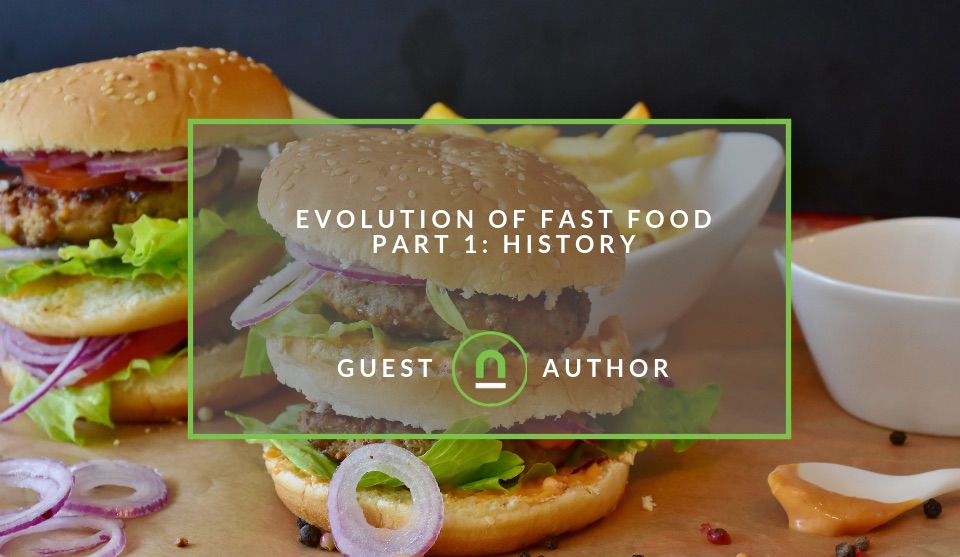Recent posts

nichemarket Advice
The South African VAT Threshold Chokehold
05 December 2025

Doctors Orders
The Difference Between SOAP Notes and DAP Notes
02 December 2025

Petrol heads
Why Load Bin Accessories Make Your Bakkie So Much Easier to Live With
26 November 2025

Alarming
What Is The Part Time Job WhatsApp Scam?
25 November 2025
Popular posts
Extravaganza
Trending Music Hashtags To Get Your Posts Noticed
24 August 2018
Geek Chic
How To Fix iPhone/iPad Only Charging In Certain Positions
05 July 2020
Extravaganza
Trending Wedding Hashtags To Get Your Posts Noticed
18 September 2018
Money Talks
How To Find Coupons & Vouchers Online In South Africa
28 March 2019
Evolution of Fast Food Part 1: History
31 July 2019 | 0 comments | Posted by Zapriana Atanassova in Masterchefs
With an estimated $570 billion in annual global sales, the fast-food industry isn’t showing signs of dying out any time soon. How has fast food and its marketing evolved through the decades and what emerging trends and threats should industry players be aware of?
From food that’s fast to fast food
Records dating back all the way to Ancient Roman times show that the demand (and supply) for affordable, convenient food has existed for a long time, in different variations. However, fast food as we know it today was pioneered in the USA- first with hamburger chain White Castle opening in 1921, and then the first fast-food McDonald’s making an appearance in 1948, around the time when automobiles (and subsequently, drive-ins) became popular.
Today, fast food refers to “hot food that’s quick to cook or already cooked and is therefore served very quickly in a restaurant”. Fast food brands such as McDonald’s and Kentucky Fried Chicken (KFC) are well-known globally, with research in the 90s concluding that the trademark symbol for McDonald’s was more globally recognisable than the Christian cross.
From fast food to junk food
The information age has brought out a lot of information about the fast-food industry that has made a lot of people reluctant to continue supporting it. Issues around health, ethics, anti-consumerism and the environment have been raised through the years and may have contributed to changes in public perception, which is apparent in our language, with the shift from “fast” food to “junk” food.
While fast food quickly became a staple in the diets of millions of people (which is where it remains today), the 1990s and early 2000s marked a change in attitude toward unhealthy food. Indie films and documentaries such as Super Size Me and Food Inc., as well as books, billboards and various other forms of media from various organisations and activists sent out warnings to consumers, urging them to look closer at the food they’re putting into their bodies.
A 2015 piece by the New York Times titled A Seismic Shift in How People Eat suggested that McDonald’s should change the “back of the house for its 36,000 restaurants” from looking like a “mini-factory serving fried frozen patties and french fries” to looking more like a “kitchen serving freshly prepared meals with locally sourced vegetables and grains”. This opinion is based on a massive shift in the way millions of people view their food- a shift which has become impossible to ignore.
Despite these movements though, fast food chains survive- especially those that know how to embrace the modern marketing tools at their disposal.
A new age of temptation
The internet has given fast-food chains a new advertising playground, where they can use meme culture, influencers and image-focussed platforms such as Instagram and Tumblr to their advantage, especially when appealing to younger demographics.
The imagery of long-standing fast food brands such as McDonald’s and KFC has even inspired modern fashion designers, and younger demographics connect with this aesthetic due to, among other things, its nostalgic appeal.
As seen in this example of KFC Russia collaborating with streetwear label Mam Cupy, major fast-food brands are well aware of this appeal and are using it to their advantage in targeting their younger demographics. Another powerful way fast-food brands utilise nostalgia is by bringing back retro flavours and previously discontinued menu items.
No matter the era, there will always be a demand for quick, cheap and tasty food. The fast-food industry has undeniably revolutionised the way billions of people around the globe eat, but a similar evolution is necessary in their digital marketing efforts if fast food joints want to continue attract-ing patrons.
Note: If you enjoyed this post, you may want to check out part 2 here
About the author
Zapriana Atanassova is a digital copywriter and community manager with a passion for creativity and communication. After majoring in Journalism and International Studies at Monash South Afri-ca, she found her place among the creative (crazy) geniuses of the Arc Interactive team – a digital marketing agency based in Sandton, Johannesburg.
For more information, visit www.arcinteractive.co.
Find all your culinary and catering needs on nichemarket
Browse our listing to find niche catering and
List your Foodie Business on nichemarket for FREE
Add your catering and food food-related companies on nichemarket to get more exposure online. Create your free business listing on nichemarket. The more information you provide about your business, the easier it will be for your customers to find you online.
If you require a more detailed guide on how to create your profile or your listing, then we highly recommend you check out the following articles.
Recommended reading
If you have time to spare and would like to dive deeper down the rabbit hole, then check out the following articles:
- Why Dunkin Donuts & Baskin Robbins Failed In South Africa
- 8 of Cape Towns Best Instagram Home Bakers
- Instagram To Launch In-App Check Out Process
- Trending Foodie Hashtags to add some Flavour to your posts
- 6 Reasons Why You May Fail At Replicating A Recipe
- 6 Inexpensive Foods That Aid Digestion
Tags: Fast Food , Guest Post
You might also like
Where Press Releases Live In An Age of AI
21 November 2025
Posted by Che Kohler in nichemarket Advice
How the press release landscape will be affected by the move to AI overviews in search, users moving to LLMs for information and AI summary tools on ...
Read moreWhat Is The Part Time Job WhatsApp Scam?
25 November 2025
Posted by Che Kohler in Alarming
A deep dive into the scheme behind all these random WhatsApp invites or Telegram chats offering you part-time remote work that pays you out instantly...
Read more{{comment.sUserName}}
{{comment.iDayLastEdit}} day ago
{{comment.iDayLastEdit}} days ago
 {{blogcategory.sCategoryName}}
{{blogcategory.sCategoryName}}

